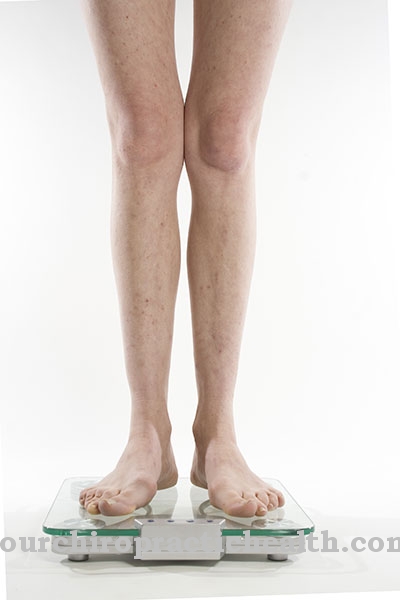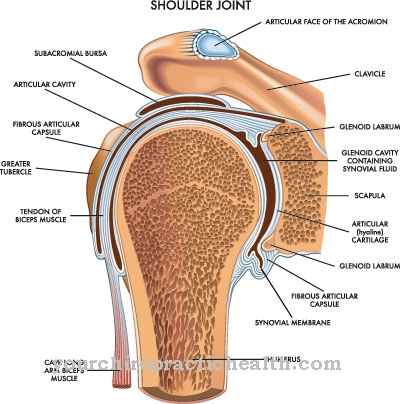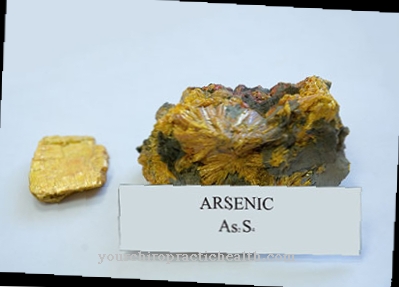The benign prostatic hyperplasia is actually not a problem as long as the men affected have no problems urinating. Only when the prostate, due to the benign cell proliferation, presents too great a drainage resistance for the urinary bladder and consequently problems with urination arise, the pressure on the urinary bladder can become a real suffering for the patient.
What is Benign Prostatic Hyperplasia?

© peterjunaidy - stock.adobe.com
Benign prostatic hyperplasia describes the benign enlargement of the prostate gland as a result of cell proliferation in men, which is widespread and mainly affects older men.
Statistically, it can be said that the likelihood of an enlarged prostate increases with advancing age. In the group of men over 65 years of age, 65 percent have an enlarged prostate and in men over 90 years it is even 90 percent.
The biggest problem with an existing benign prostatic hyperplasia is usually the so-called micturition disorder, a problem with urination, which in a greatly enlarged prostate can even lead to urinary retention, a complete inability to empty the bladder.
causes
It is still not clear what exactly the causes of benign prostatic hyperplasia are, but there are indications that age-related changes in the male hormone balance are responsible for the cell increase.
The subject under discussion is the shift in the ratio of male and female hormones with increasing age. As the testosterone level decreases and the level of estrogen remains constant, over the years an excess of estrogen develops, which could slow down the natural death of prostate cells.
The overgrowth of glandular tissue could be caused by an increased concentration of the steroid hormone dihydrotestosterone (DHT), which is synthesized from testosterone with the help of a certain enzyme, 5-alpha reductase. Aside from DHT, there are numerous other growth factors that may be the cause of benign prostatic hyperplasia.
Symptoms, ailments & signs
Benign prostatic hyperplasia itself does not cause any symptoms. These arise exclusively from the displacement processes due to the enlarged prostate. The extent to which the existing symptoms are of medical importance depends on the current stage of the disease.
In stage I, the need to urinate at night and urination are often difficult. When urinating, it comes to voiding disorders and irritation symptoms. The urine stream is weakened. It takes longer for the bladder to empty again.
The irritation symptoms are expressed by pain when urinating and frequent urination. However, no residual urine remains in the bladder at this stage. A disease value does not yet exist, but the quality of life is often already limited. In stage II there is already residual urine formation with more than 50 milliliters of urine.
Urination begins late and is constantly interrupted. In the third stage, the bladder overflows. Bladder stones can even cause urinary congestion, which leads to a congested kidney. Urinary obstruction is a medical emergency that requires immediate treatment. With prolonged persistence, the kidneys fail. The veins accumulate in the bladder exit area.
They can tear and cause macrohematuria (blood in the urine). Urinary tract infections are still favored. With prolonged urination disorders, the so-called bar bladder is created by strengthening the bladder muscles. Since the bladder is no longer fully contractible, urinary incontinence then develops.
Diagnosis & course
In order to be able to diagnose benign prostatic hyperplasia, a digital examination of the prostate is indicated first. In this context, “digital” stands for the Latin word “digitus”, which translates as “finger”. The scanning examination of the prostate is carried out from the rectum with the aid of the finger. This is often followed by an ultrasound examination, whereby the ultrasound device is also brought to the prostate via the rectum.
The urinary tract and its constriction are of particular interest in benign prostatic hyperplasia, because an excess of residual urine in the bladder can cause infections of the urinary bladder and also the kidneys. With the help of uroflowmetry, a method in which the patient urinates in a special funnel with a measuring device, the urine flow can be measured per unit of time when urinating. If the value is too low, this indicates an obstruction of the urine flow, as the enlarged prostate on the one hand constricts the urinary bladder and on the other hand represents an increased flow resistance.
If the prostate has been shown to be enlarged, a blood test is used to determine the tumor marker in addition to some other markers in order to rule out a malignant change in the prostate gland. If this is increased, however, a tissue sample should be taken from the prostate, which is generally quite easy to take, similar to an ultrasound examination of the organ.
If the increase in cells is benign, surgery may be indicated later if the organ does not respond to drug therapy or urinary retention threatens due to the mass of the prostate.
Complications
Benign prostatic hyperplasia can have various complications. The enlarged prostate always leaves a certain amount of residual urine in the bladder and urethra. This increases the risk of inflammation and urinary tract infections. In the worst case, the pathogens can spread into the bloodstream and attack the entire body.
Urosepsis occurs, which, if left untreated, leads to death in over 50 percent of cases. Furthermore, the formation of urinary stones is favored. This causes urine to build up up to the kidneys and this can also become inflamed as a result. Renal failure (renal insufficiency) can result, which severely affects the quality of life.
The kidneys can no longer fulfill their functions and substances that are subject to urine are no longer excreted. This can lead to blood poisoning (uremia), which can result in a coma and ultimately death. The fluid and salt balance is also thrown upside down. Edema develops and the person concerned suffers from high blood pressure (hypertension).
In addition, the hormones produced in the kidneys are missing, the body suffers from a disruption of blood formation and thus anemia. Benign prostatic hyperplasia can also lead to a bar-like thickening (hypertrophy) of the urinary bladder wall, resulting in a bar bladder. This further increases the risk of urinary tract infections and urinary obstruction with subsequent kidney failure.
When should you go to the doctor?
As the name "benign" already suggests, benign prostatic hyperplasia is essentially a benign disease, which, however, should lead to a doctor in order to rule out cancerous tumors of the prostate if it is suspected. Thereafter, visits to the doctor are often not necessary, as the hyperplasia usually progresses very slowly and the typical symptoms such as difficult emptying of the bladder due to narrowing of the urine stream only slowly become clearer.
Even after a confirmed initial diagnosis, it is quite possible to allow a longer time to pass before the next doctor's visit or a possible operation if the symptoms are still within an acceptable range and the quality of life of the person concerned is not noticeably impaired.
However, a doctor should be consulted if there are significant urination restrictions. If benign prostatic hyperplasia is at this stage, surgical treatment should be considered in order to avoid the risk that residual urine remaining in the urinary tract can lead to bacterial infections. The family doctor or treating urologist should also be consulted with new or severe complaints.
Such signs are, for example, pain or burning sensation when urinating, blood in the urine, and a feeling of pressure or pain in the abdomen or back, the association with fever and a general feeling of illness being particularly serious. In addition, a visit to the doctor makes sense if a patient with benign prostatic hyperplasia suffers from impotence.
Doctors & therapists in your area
Treatment & Therapy
From a medical point of view, an enlarged prostate alone is not a reason for therapy. Therapeutic measures are only indicated if the enlargement leads to urination disorders that limit the patient's quality of life.
First, an attempt can be made to improve the symptoms with the help of herbal preparations. Products with saw palmetto or pumpkin extract, as well as rye pollen and pine or spruce extracts are often used here.
If the enlargement has progressed too far, so-called alpha-receptor blockers can be used. These drugs relax the prostate, which reduces drainage resistance and makes urine flow easier. On the one hand, this means that less residual urine remains in the urinary bladder, which reduces the risk factor of infections and, on the other hand, the improved urine excretion also leads to a decrease in the frequency of urination.
5-alpha reductase inhibitors are also available. These are able to shrink the organ by up to 30 percent. However, temporary erectile dysfunction must be expected while taking the drug.
Of course, there is also the option of surgical intervention using a scalpel or modern laser surgery, which is unavoidable in the event of impending urinary retention, not only because of the risk of kidney failure.
Outlook & forecast
The chances of recovery from benign prostatic hyperplasia are based on the severity of the disease. In many patients no further health complaints are found in everyday life, so that neither treatment nor lifestyle impairment occurs.
If the prostate continues to enlarge, it leads to disturbances of sexuality and urination. In this phase of the disease, patients are usually supported with natural aids. Drug treatment can also be used. So far, however, the natural remedies have established themselves as more reliable. They work well and are free from side effects. The benign prostatic hyperplasia does not heal despite the therapy. The alleviation of the sequelae is achieved to a considerable extent and is often sufficient.
In severe cases, the growth of the prostate cannot be stopped. Surgical intervention is necessary in order not to further damage the organism or to endanger health. It reduces the symptoms. The condition most commonly affects older men. The likelihood that they will suffer from other diseases is very high in people over 60 years of age. Despite the operation, this worsens the chances of freedom from symptoms and increases the risk of possible complications.
prevention
In order to prevent benign prostatic hyperplasia, due to the fact that the exact causes are not yet known, only general tips for a healthy lifestyle can be given. Healthy food, little alcohol and avoiding tobacco products are just as much a part of this, as is sufficient exercise.
An annual preventive examination of the prostate is recommended from the age of 50. Although this cannot prevent benign prostatic hyperplasia, malignant changes in the organ can be detected at an early stage.
You can do that yourself
If the prostate has not yet enlarged very much and the symptoms are only slight, natural substances are available on the market to support the prostate function. However, a positive effect of pumpkin seeds and Co. on the prostate has not yet been proven. The only exception are dried saw palmetto fruits, which are taken in the form of capsules. A sufficiently high testosterone level is important for the healthy functioning of the prostate.
A balanced diet with lots of amino acids (especially contained in tuna, quark, eggs, oat flakes and nuts) and enough sleep are sufficient for this. Scientific studies have also confirmed that frequent ejaculations improve prostate function. Getting enough exercise and a normal body weight also contribute to a healthy prostate.
After a prostate operation, spicy food, carbon dioxide, cigarettes and alcohol should be avoided, as these make the urine more “acidic” and thus delay healing as it flows through the wound. Alcohol abstinence improves the intensity of the urine stream, so that a negative effect of high alcohol consumption on the prostate can generally be assumed.



























